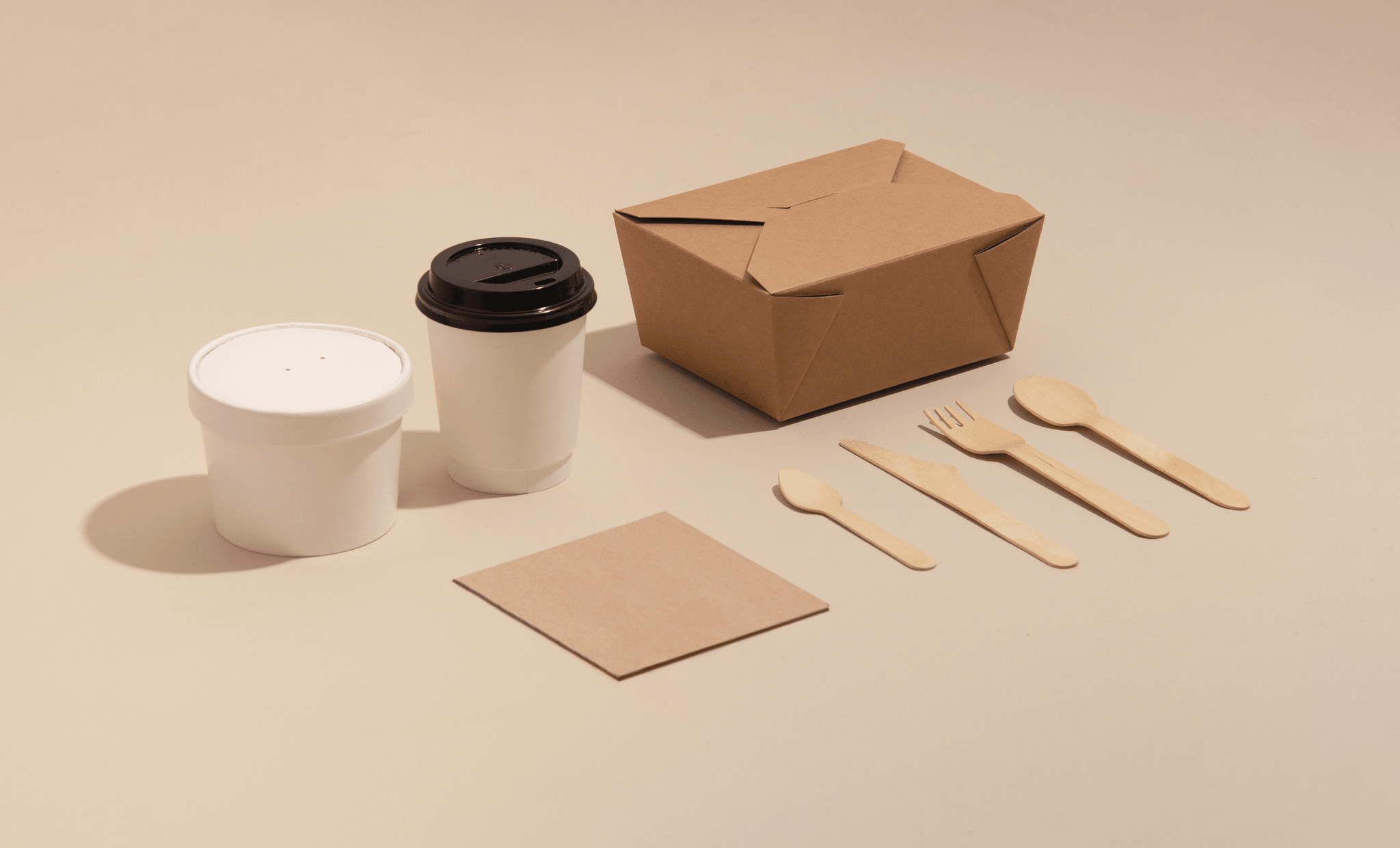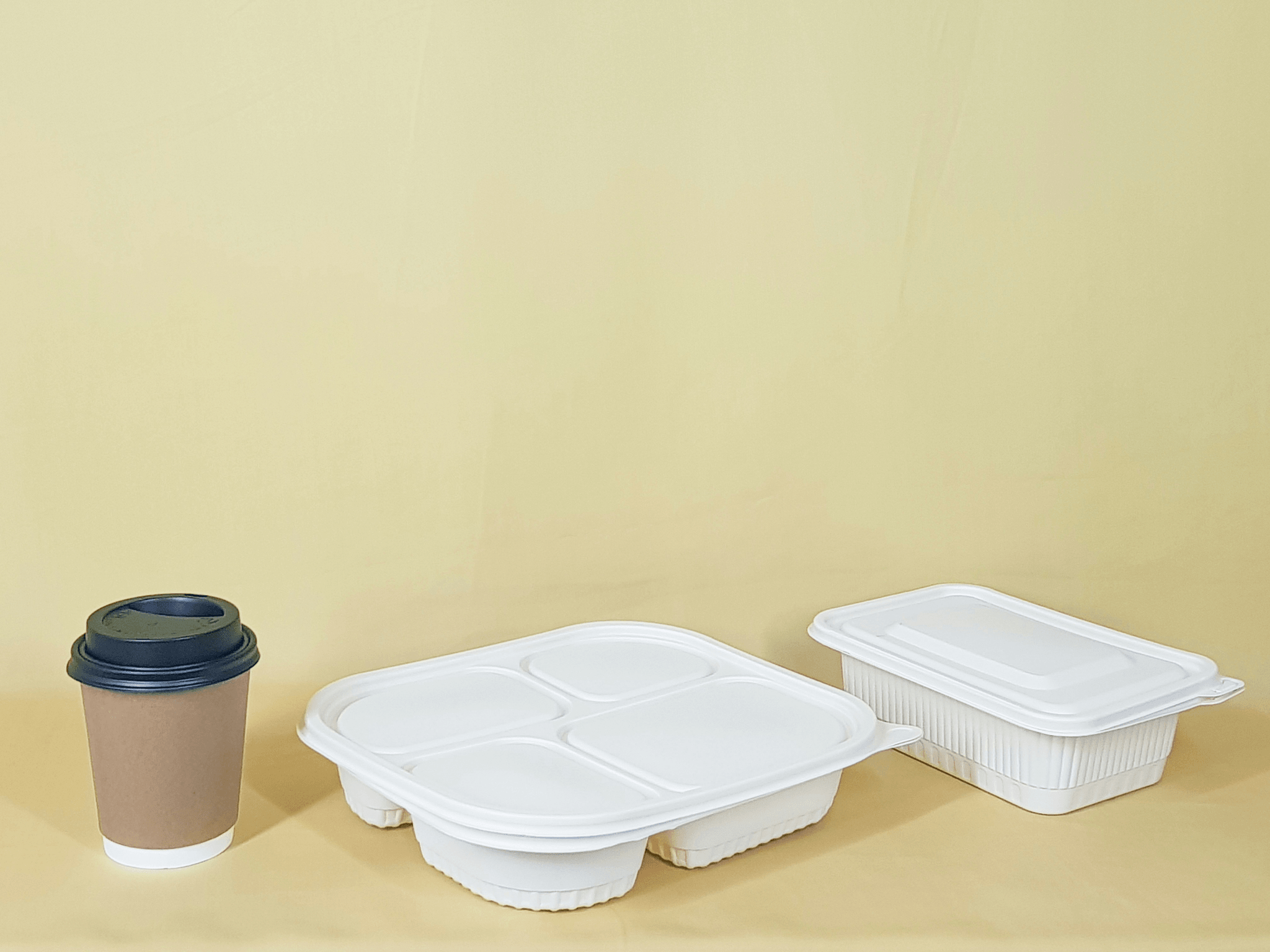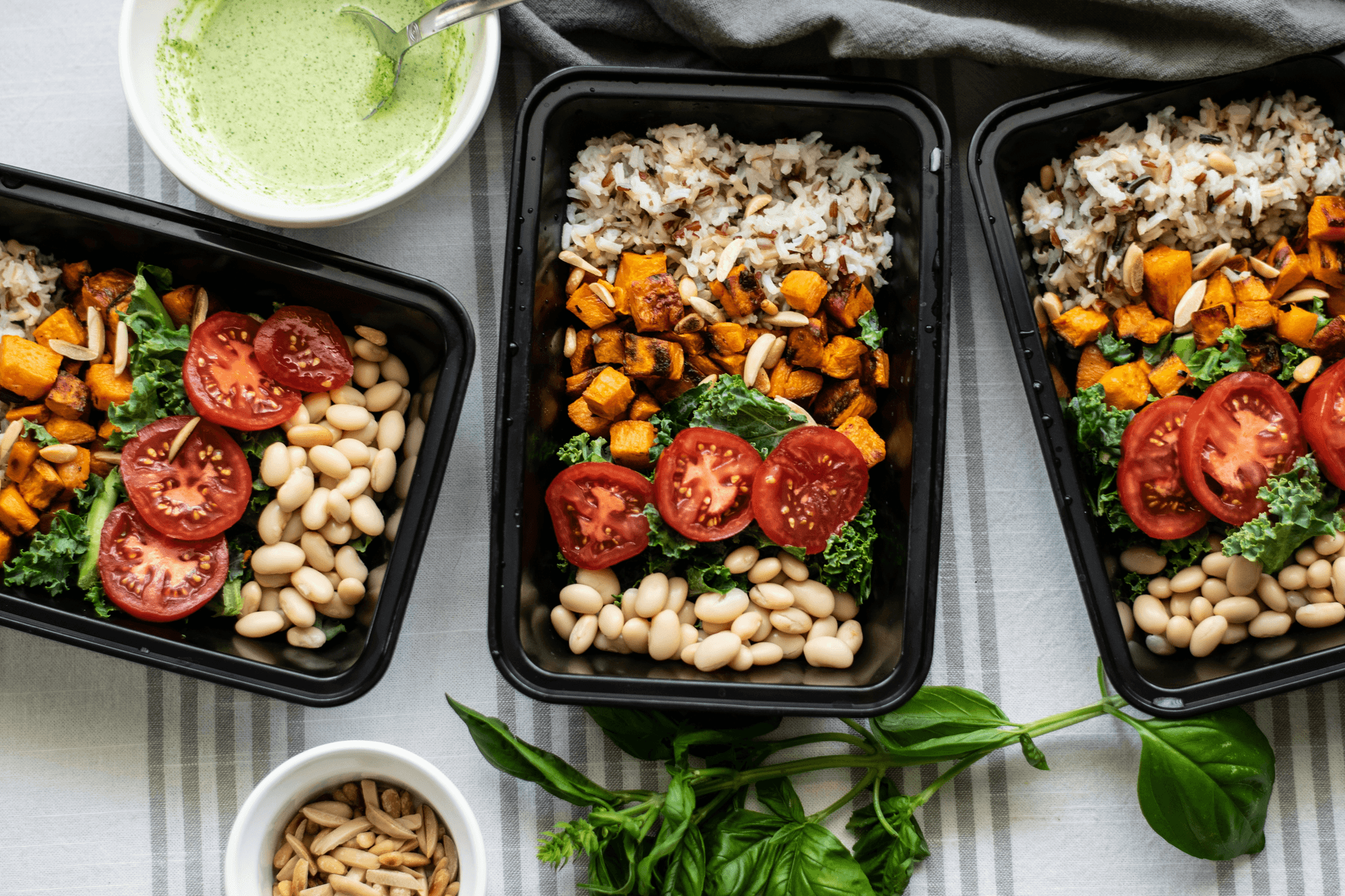Introduction

In a world increasingly conscious of its environmental footprint, the choice of packaging has never been more critical. Eco takeout containers are leading the charge in this green revolution, providing sustainable alternatives to traditional plastic options. With the rise of sustainable packaging, consumers and businesses alike are looking for ways to reduce waste and embrace biodegradable materials.
Why Choose Eco Takeout Containers
Switching to eco takeout containers isn't just a trend; it's a necessary step towards sustainability. These biodegradable to go food containers help minimize pollution and landfill waste, making them an attractive option for environmentally conscious consumers. Plus, they resonate well with customers who prioritize businesses that demonstrate a commitment to eco-friendly practices.
The Rise of Sustainable Packaging
The shift toward sustainable packaging is not just a passing fad—it's becoming the new norm in consumer behavior. As awareness grows about the environmental impact of our choices, many are asking: Is biodegradable packaging better than plastic? This question reflects the broader movement toward reducing reliance on single-use plastics and embracing recyclable take out containers that can decompose naturally.
Understanding Biodegradable Materials
To fully appreciate eco takeout containers, it’s essential to understand what they’re made of and how they work. Many people wonder, What are biodegradable takeout containers made of? Typically crafted from plant-based materials like bamboo or sugarcane, these products break down more easily than traditional plastics. By choosing biodegradable take out boxes over their plastic counterparts, you’re not only making a smart choice for your business but also contributing positively to the planet.
What Materials Are Eco Takeout Containers Made Of

Exploring Plant-Based Plastics
Plant-based plastics are at the forefront of eco takeout containers' material innovation. These biodegradable to go food containers are often derived from renewable resources such as corn starch or sugarcane, making them a more sustainable alternative to traditional petroleum-based plastics. Not only do they reduce reliance on fossil fuels, but they also decompose more efficiently in composting environments compared to their plastic counterparts.
Moreover, plant-based plastics can be designed to mimic conventional plastic's durability and flexibility while being better for our planet. This raises an important question: Is biodegradable packaging better than plastic? While both types serve similar functions, plant-based options provide an environmentally friendly solution that aligns with growing consumer preferences for sustainability.
The Role of Bamboo and Sugarcane
Bamboo and sugarcane are two standout materials when discussing what material takeaway containers are made of. Bamboo is not only fast-growing but also highly renewable; it requires minimal water and no pesticides for cultivation. Sugarcane, on the other hand, produces bagasse—a byproduct from sugar extraction—which is transformed into sturdy biodegradable take out boxes that can handle hot or cold foods with ease.
Both bamboo and sugarcane contribute significantly to reducing waste since they break down naturally over time when disposed of properly. As consumers increasingly seek recyclable take out containers that leave a smaller carbon footprint, these materials offer practical solutions without sacrificing quality or performance.
Benefits of Paper and Cardboard
Paper and cardboard have long been staples in the world of food packaging—now they're evolving into eco-friendly champions among biodegradable takeout containers! Made from renewable resources like trees (preferably sourced from sustainable forests), paper products offer excellent recyclability alongside biodegradability. Many restaurants are turning to these options as they align perfectly with the growing demand for sustainable practices.
One significant benefit is their lightweight nature, which helps reduce transportation emissions during delivery—a win-win for both businesses and the environment! Additionally, modern advancements have led to waterproof coatings that allow paper products to hold liquids without compromising their integrity or creating harmful waste like conventional plastic does.
Are Biodegradable Takeout Containers Better Than Plastic?

Environmental Impact of Disposal
The environmental impact of disposal is a critical factor in determining the sustainability of packaging materials. Eco takeout containers made from biodegradable materials break down more naturally than their plastic counterparts, which can take hundreds of years to decompose in landfills. Additionally, while recyclable take out containers can be processed again, many plastics end up in oceans and landfills due to improper disposal practices, contributing to pollution and harming wildlife.
Decomposition vs. Longevity
When comparing biodegradable takeout containers with plastic options, it's essential to consider decomposition versus longevity. Biodegradable to go food containers are designed to break down into natural components within a specific timeframe under the right conditions—often within a few months—making them an environmentally friendly choice for single-use applications. In contrast, traditional plastic takeaway containers can persist for centuries without breaking down completely, leading to long-term ecological consequences that we’re only beginning to understand.
Customer Preferences for Sustainability
Customer preferences for sustainability are shifting dramatically as more people become aware of their ecological footprint. Many consumers actively seek out eco-friendly alternatives like biodegradable take out boxes when ordering food or shopping for packaging solutions; they want products that align with their values regarding environmental responsibility. This growing demand indicates that businesses offering recyclable take out containers and other sustainable options not only cater to conscious consumers but also position themselves favorably in an increasingly competitive market.
The Safety of Plastic Takeaway Containers

When it comes to food safety, the materials used in takeaway containers can raise eyebrows. Many consumers are concerned about the potential health risks associated with plastic takeaway containers, especially considering the increasing popularity of eco takeout containers made from biodegradable materials. Understanding what material takeaway containers are made of is crucial for making informed choices that prioritize both health and sustainability.
Are Plastic Takeaway Containers BPA Free?
BPA, or bisphenol A, is a chemical often found in various plastics, and its presence in food packaging has sparked significant concern among consumers. Luckily, many manufacturers now produce plastic takeaway containers that are BPA free, addressing these health fears head-on. However, it’s essential to check product labels or inquire with suppliers to ensure that your plastic options do not contain this controversial compound.
Analyzing Health Risks
While many plastic takeaway containers are marketed as BPA free, other chemicals may still pose potential health risks when they leach into food—especially when heated. Research indicates that some plastics can release harmful substances under high temperatures or prolonged contact with food items. This raises the question: Is biodegradable packaging better than plastic? Biodegradable to go food containers often eliminate these concerns by using natural materials that do not carry the same risks as traditional plastics.
Alternatives for Safe Food Storage
For those looking to ditch plastic altogether, there are plenty of alternatives available on the market today! Biodegradable take out boxes made from plant-based materials like sugarcane and bamboo offer a safe and eco-friendly solution for storing food without compromising health standards. Additionally, recyclable take out containers provide another option for environmentally conscious consumers who want to minimize their impact while ensuring safe storage for their meals.
Unitedpakstore's Commitment to Sustainability

In a world increasingly concerned with environmental impact, Unitedpakstore stands out as a beacon of hope for those seeking eco-friendly solutions. Their commitment to sustainability is reflected in their extensive range of eco takeout containers designed to minimize waste and promote responsible consumption. By choosing biodegradable takeout containers from Unitedpakstore, restaurants can align their practices with the growing demand for sustainable packaging.
Overview of Their Eco-Friendly Options
Unitedpakstore offers a diverse selection of eco-friendly options that cater to various dining needs, ensuring that every meal can be served responsibly. Their biodegradable to go food containers are crafted from natural materials like plant-based plastics, sugarcane, and bamboo, providing an alternative that’s both functional and sustainable. Additionally, the company emphasizes recyclable take out containers that further reduce environmental impact by encouraging recycling practices among consumers.
Custom Packaging Solutions for Restaurants
Understanding that one size doesn't fit all when it comes to food service, Unitedpakstore provides tailored packaging solutions for restaurants looking to enhance their sustainability efforts. From biodegradable take out boxes designed specifically for different cuisines to customizable branding options on recyclable take out containers, they empower businesses to make eco-conscious choices without sacrificing style or functionality. This flexibility helps restaurants not only meet customer preferences but also communicate their commitment to sustainability effectively.
The Impact of Choosing Unitedpakstore
Choosing Unitedpakstore means making a significant impact on both the environment and your business's reputation. By opting for their eco-friendly products like biodegradable takeout containers, restaurants can reduce plastic waste and contribute positively to the planet's health—something increasingly valued by today's consumers. Moreover, with questions like Are plastic takeaway containers BPA free? becoming more prevalent among health-conscious diners, offering biodegradable options positions businesses as leaders in the shift towards safer and more sustainable food packaging.
How to Choose the Right Biodegradable To Go Food Containers

Choosing the right biodegradable to go food containers can be a game-changer for your business and the environment. With an increasing demand for eco takeout containers, understanding what materials are used and how they perform is crucial. Let’s dive into some key factors to consider when selecting the perfect biodegradable take out boxes for your meals.
Matching Container Type to Meal
When it comes to eco takeout containers, not all are created equal; different meals require different types of containers. For instance, soups and sauces need sturdy, leak-proof options, while salads might thrive in breathable paper or cardboard containers that allow for ventilation. Understanding what material takeaway containers are made of will help you choose wisely—whether it’s plant-based plastics or bamboo—ensuring that your food stays fresh and appealing during transport.
Understanding Size and Portion Control
Portion control is essential in both customer satisfaction and reducing waste, making size a critical factor when selecting biodegradable to go food containers. You want your customers to enjoy their meal without feeling overstuffed or underfed; therefore, offering a variety of sizes can cater to different appetites. By ensuring that your recyclable take out containers align with portion sizes, you not only enhance customer experience but also promote sustainability by minimizing leftover food waste.
Importance of Waterproof and Leak-Proof Designs
One of the most significant advantages of using biodegradable take out boxes is their ability to maintain food integrity during transit—this means waterproof and leak-proof designs are a must! Nobody wants their delicious meal to turn into a soggy mess before it even reaches its destination; thus, investing in high-quality materials is essential. Plus, knowing whether plastic takeaway containers are BPA free adds another layer of safety when considering alternatives for safe food storage.
Conclusion

As we wrap up our journey through the world of eco takeout containers, it’s clear that making the switch to sustainable packaging is no longer just a trend; it’s a necessity. The environmental benefits of biodegradable to go food containers are vast, reducing landfill waste and minimizing our carbon footprint. By opting for options like biodegradable take out boxes or recyclable take out containers, businesses can contribute to a healthier planet while appealing to eco-conscious consumers.
Why Go Green with Takeout Packaging
Choosing green alternatives like biodegradable takeout containers is essential for both the environment and your brand image. Customers today are increasingly asking, Is biodegradable packaging better than plastic? and they’re looking for businesses that align with their values. By investing in eco-friendly solutions, you not only help reduce pollution but also foster customer loyalty among those who prioritize sustainability in their purchasing decisions.
The Future of Eco-Friendly Containers
The future of packaging is undoubtedly leaning towards more sustainable materials as innovations continue to emerge in the industry. As we explore what are biodegradable takeout containers made of?, we see an exciting blend of plant-based plastics, bamboo, and recycled paper products paving the way forward. This evolution promises not only to enhance environmental stewardship but also to improve consumer perceptions about food safety and quality—especially when questions arise like Are plastic takeaway containers BPA free?
Making Informed Choices for Your Business
When selecting biodegradable to go food containers or recyclable take out containers for your establishment, it's crucial to consider both functionality and sustainability. Understanding what material takeaway containers are made of can help you make informed choices that align with your business goals and customer expectations. By prioritizing eco-friendly options, you position your business as a leader in sustainability while ensuring that every meal served is wrapped in care for our planet.
